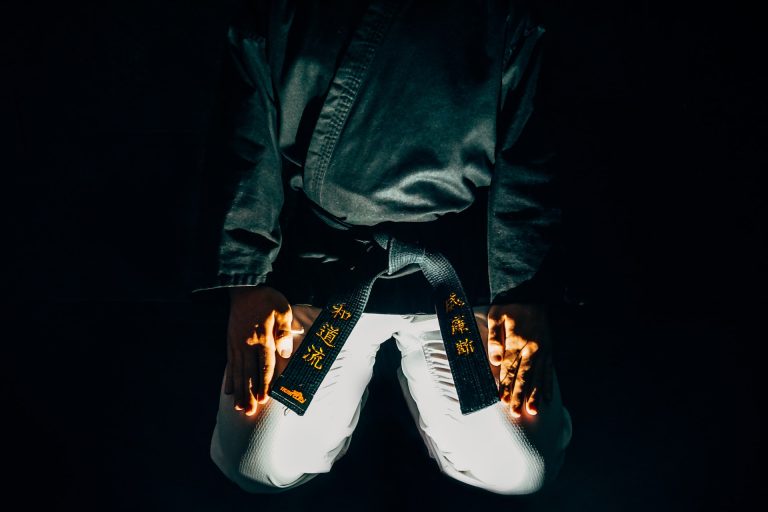How Many Belts in Karate UK: A Comprehensive Guide to Karate Belts and Ranking System
Karate is a martial art that has gained popularity worldwide for its focus on self-defense techniques, discipline, and fitness. The ranking system in karate is symbolized by a series of colored belts that signify a student’s level of proficiency and achievement. The number of karate belts varies depending on the style and organization followed. In this blog, we will explore the different karate belts in the UK, the ranking system, and what it takes to earn a black belt.
Karate Belts: A Brief Overview
Karate is known for its belting system, which includes nine colored belts and a black belt. The order of karate belts is white, yellow, orange, green, blue, purple, brown (three degrees), and black (ten degrees).
Each belt level represents the student’s progress and skill level. The color of the belt indicates a student’s rank, with white being the lowest and black being the highest. A student is awarded a belt after successfully completing a belt test that includes specific requirements such as katas, sparring, and board-breaking techniques.
The Karate Belt Ranking System in the UK
There are numerous karate styles followed in different countries, and the UK follows the ranking system established by the World Karate Federation (WKF). The following are the different karate belts and their meanings in the UK:
1. White Belt (10th Kyu)
A white belt signifies a beginner who has just started karate. At this level, the student learns basic techniques, such as punches, kicks, and blocks.
2. Yellow Belt (9th Kyu)
After a few months of training, a student takes the yellow belt test. The yellow belt represents the second step in the karate journey, where a student learns more advanced techniques such as stances, kicks, and strikes.
3. Orange Belt (8th Kyu)
An orange belt represents a higher level of skill and indicates that the student has demonstrated proficiency in more challenging techniques, including kata (form) and kumite (sparring).
4. Green Belt (7th Kyu)
A green belt represents a student who has advanced in their training and is becoming more proficient in their technique. At this level, a student learns more complex katas and sparring techniques.
5. Blue Belt (6th Kyu)
A blue belt indicates that a student has learned numerous techniques and is progressing towards increasing their level of proficiency. This belt signifies the mastery of the basics and technical proficiency.
6. Purple Belt (5th Kyu)
A purple belt represents a student who has mastered the basic techniques and is ready for more advanced training methods. At this level, the student learns to chain techniques and transitions between them more efficiently.
7. Brown Belt (4th-1st Kyu)
The brown belt is further divided into three levels, with each representing an increase in skill and proficiency. It indicates that a student is closer to becoming a black belt and is required to focus on perfection in their techniques.
8. Black Belt (1st Dan to 10th Dan)
A black belt represents the highest level of proficiency, and earning this rank involves years of training and dedication. The karateka (karate practitioner) must demonstrate the highest level of technique, skill, and knowledge of karate history and philosophy. The black belt is divided into ten levels, known as Dan, with 1st Dan being the lowest and 10th Dan being the highest.
Frequently Asked Questions about Belts in UK Karate
Karate, being a Japanese martial art, is focused on delivering self-defense techniques using both feet and hands. While participating in this sport, the karateka can progress through various grades, which is often demonstrated by wearing coloured belts.
One of the most common questions from individuals interested in Karate is, ‚how many belts are there in Karate UK‘? In this blog post, we will provide you with an in-depth answer to this question and many more related to the colour grading system in Karate UK.
Q: How many belts are used in Karate UK grading system?
The Karate UK grading system typically comprises of ten coloured belts, known initially as kyu grades, followed by black belts, which are called Dan grades.
Q: What are the different belt colours in Karate UK grading system?
Below mentioned are the belt colours in Karate UK, starting from the lowest level to the highest level:
– White belt
– Red belt
– Yellow belt
– Orange belt
– Green belt
– Blue belt
– Purple belt
– Brown belt
– Black belt (Dan)
Q: What is the significance of a white belt?
The white belt is the starting level in Karate, and it signifies the beginning of the student’s journey to learn this martial art. For students, wearing a white belt represents emptiness – an absence of knowledge and experience in Karate.
Q: How long does it take to progress from a white belt to a black belt?
The time taken to progress from a white belt to a black belt heavily depends on the individual’s dedication, hard work, consistency, and of course, talent. However, the average time required is around 4 to 6 years.
Q: How many Dan grades are present in Karate UK?
Karate UK comprises of ten Dan grades, which represent black belts.
Q: What is the highest Dan grade in Karate UK grading system?
The highest Dan grade in Karate UK grading system is the 10th Dan black belt, which signifies the highest level of proficiency in Karate.
Q: Are there international differences in the Karate belt grading system?
Yes, there are differences in the Karate belt grading system globally. Every country has its grading systems and use different colours of belts to differentiate between the skill levels.
Q: Can there be deviations in the Karate grading system across different dojos and instructors?
Yes, there could be minor deviations in the Karate grading system across different dojos, instructors, and associations, but the basic grading system remains consistent.
Q: Is the Karate UK grading system based purely on technical skills and knowledge?
No, the Karate UK grading system is not based solely on technical skills and knowledge. It also focuses on the individual student’s character, attitude, and personal traits.
Q: Do grading examinations differ for different coloured belts?
Yes, grading examinations differ for different coloured belts as students are required to demonstrate different levels of competence and knowledge at each stage of their progression.
How Many Belts in Karate UK: A Comprehensive Guide
Karate is a martial art that originated in Okinawa, Japan and has become popular all over the world. One of the key elements of karate is the progression through a series of colored belts, each representing a level of skill and knowledge achieved by the practitioner. In the UK, there are several different karate organizations, each with their own belt system. In this guide, we will explore how many belts exist in Karate UK and the requirements for achieving each one.
The Basic Belt System in Karate UK
The basic belt system in Karate UK usually consists of the following belts, listed in order from beginner to advanced:
– White belt
– Yellow belt
– Orange belt
– Green belt
– Blue belt
– Purple belt
– Brown belt
– Black belt
How to Achieve Each Belt in Karate UK
To progress through the belt system in Karate UK, students must fulfill certain requirements set by their respective karate organizations. These requirements generally involve a combination of physical techniques, theory knowledge, and practical application.
White Belt
The white belt is the starting point for all beginners in Karate UK. To achieve this belt, students must learn the basic stances, punches, and blocks, as well as the etiquette of the dojo (karate training hall) and the philosophy of karate. Students are expected to attend regular classes and demonstrate their understanding of the basics before moving on to the next belt.
Yellow Belt
Once a student has gained a basic understanding of karate, they can progress to the yellow belt. This belt requires the student to demonstrate more advanced techniques, such as kicks and combinations, as well as a deeper knowledge of karate philosophy and theory.
Orange Belt
The orange belt is awarded to students who show proficiency in the techniques learned at the yellow belt level, as well as a greater understanding of the principles of karate. At this stage, students are expected to demonstrate control over their movements and show an ability to put theory into practice.
Green Belt
The green belt represents a major milestone in the progression of a karate student. At this level, students are expected to demonstrate a high level of physical ability, including more advanced techniques and combinations. Theory knowledge is also tested, and students must demonstrate a deeper understanding of the principles of karate.
Blue Belt
The blue belt marks a significant increase in the difficulty of the techniques and combinations required of the student. At this level, students must also be able to demonstrate their ability to apply these techniques in a sparring situation, showing control and awareness of their opponent.
Purple Belt
The purple belt represents the highest level of the intermediate range in Karate UK. Students at this level are expected to have a high degree of proficiency in all techniques learned up to this point, and demonstrate an ability to adapt their techniques to different situations. Theory knowledge is also a significant factor at this level.
Brown Belt
The brown belt is the final step before achieving the coveted black belt. At this level, students are expected to show mastery of all the techniques and combinations learned to date, and be able to perform them with speed and power. They must also display a deep understanding of the principles of karate, as well as a high degree of proficiency in sparring and self-defense.
Black Belt
The black belt is the ultimate goal for all serious karate students. To achieve this belt, students must demonstrate a high degree of proficiency in all aspects of karate, including physical techniques, theory knowledge, and practical application. They must show an ability to apply these techniques in a variety of situations, and be able to teach them to others.
In Summary
The belt system in Karate UK is a representation of a student’s progress through the ranks of the art. Each belt requires the student to demonstrate an increasing degree of skill and knowledge, both in physical techniques and theory. Achieving the black belt is a significant accomplishment and is a testament to the dedication and hard work of the karate student.
If you are interested in starting your karate journey, look for a reputable dojo in your area and begin your training today!
Inhaltsverzeichnis






